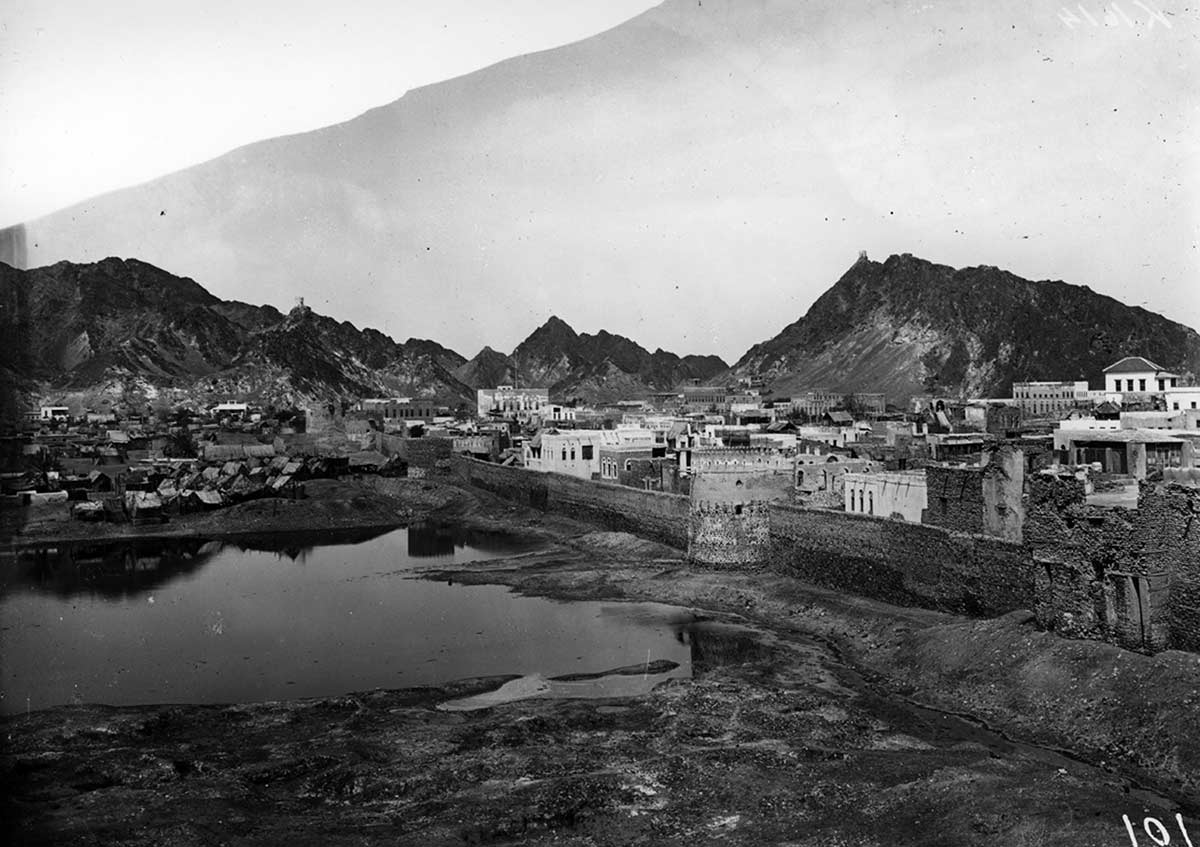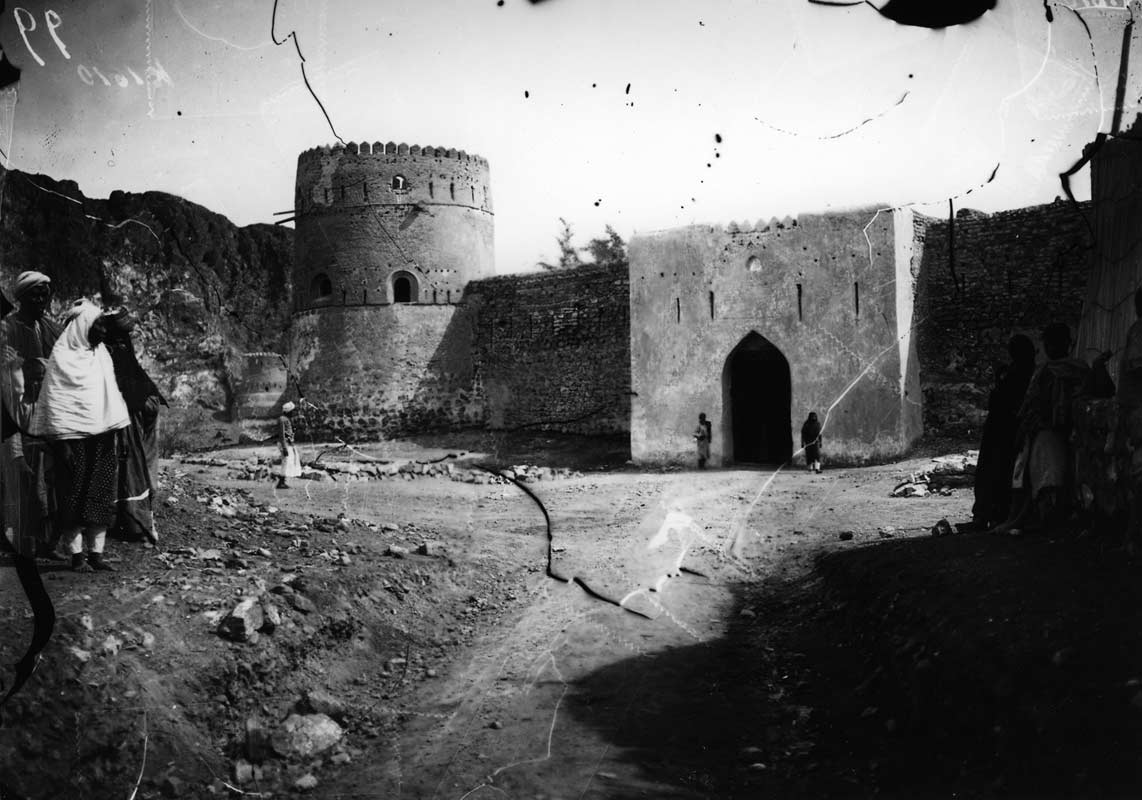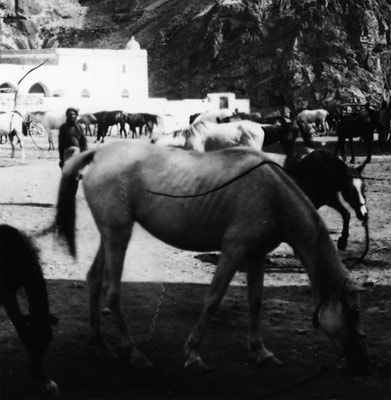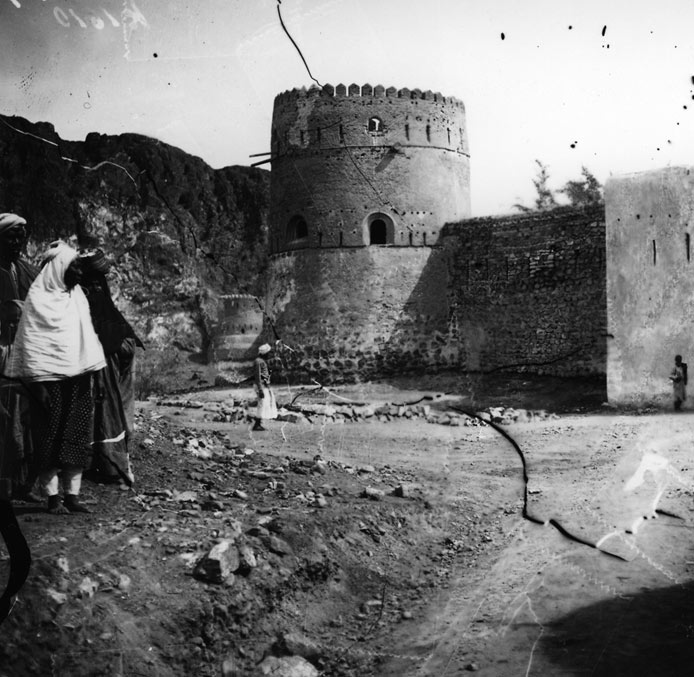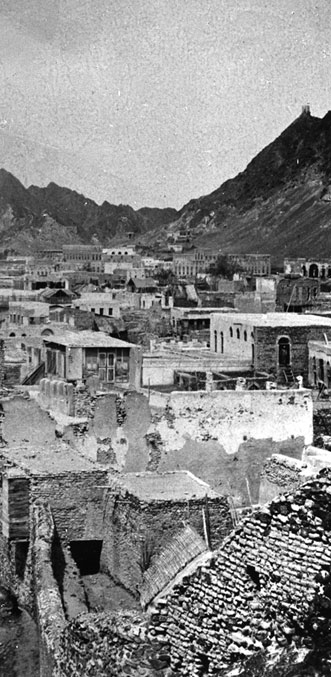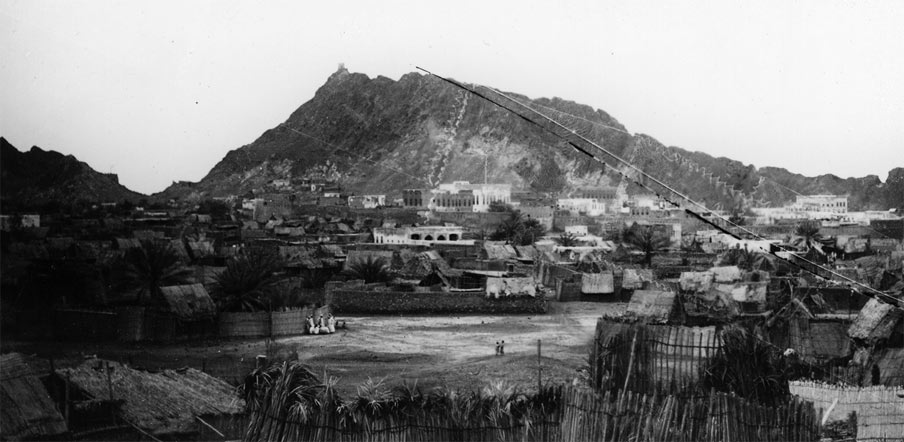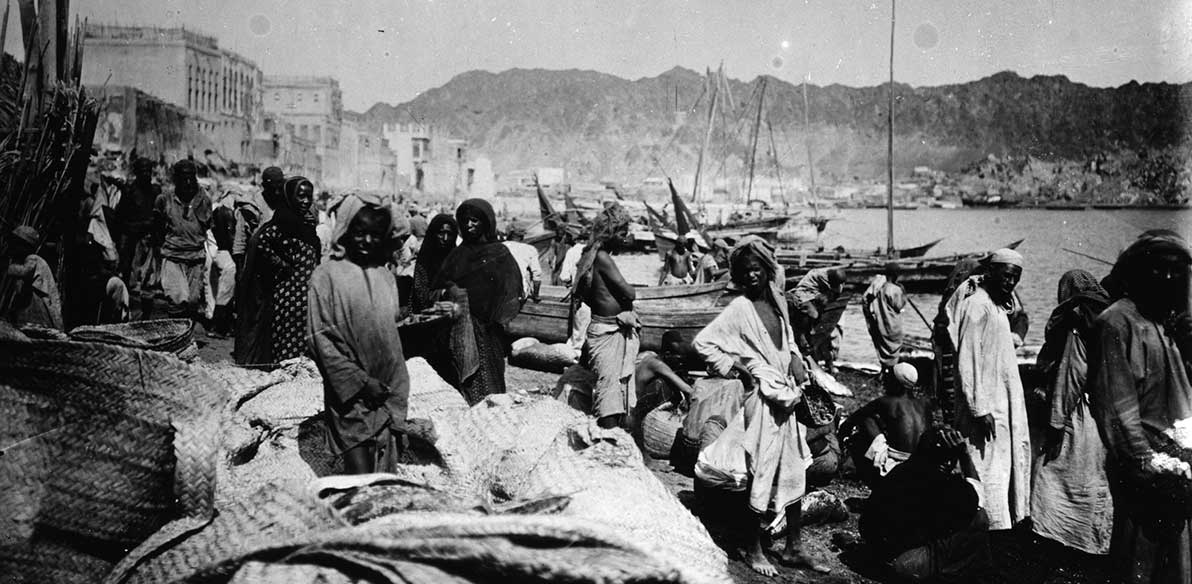Scenes from Oman
During 1903-4, Hermann Burchardt—a financially independent traveler from Berlin—voyaged by dhow around the Middle East with the goal of photographing cities rarely visited by other itinerant photographers. In the Omani port cities of Muscat and Matrah, he found his camera welcomed in public spaces. As he walked through the city making pictures, he sparked the curiosity of local observers.
[ read more ]
